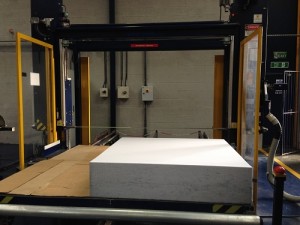Foam Conversion: Everything You Need to Know
Foam conversion is a versatile process that involves transforming raw foam materials into finished products for various applications across industries. This innovative technique has revolutionized the manufacturing sector, offering lightweight, durable, and cost-effective solutions. In this article, we will delve deep into foam conversion, exploring the different methods, benefits, and potential uses. So, let’s dive right in and explore the fascinating world of foam conversion.

In this section, we will cover the fundamental concepts of foam conversion and the essential processes involved.
What is Foam Conversion?
Foam conversion is the process of converting raw foam materials, such as polyurethane, polyethylene, or polystyrene, into finished products. These products can be in the form of foam sheets, blocks, rolls, or custom shapes, tailored to meet specific requirements.
Types of Foam Conversion
Foam Cutting: Foam cutting is a crucial stage in foam conversion, where large foam blocks are sliced into precise shapes and sizes. This can be done using various techniques, such as:
Hot Wire Cutting
Waterjet Cutting
Die Cutting
Foam Laminating: Foam laminating involves bonding multiple Foam Conversion layers of foam together to achieve specific properties, such as increased thickness, enhanced strength, or improved insulation.
Foam Molding: Foam molding is a process where foam is molded into desired shapes using molds or heat-forming techniques.
Foam Skiving: Foam skiving is the process of thinning down foam to achieve a specific thickness, often used for precision applications.
The Advantages of Foam Conversion
Foam conversion offers numerous advantages that make it an attractive choice for various industries. Let’s explore some of the key benefits:
Lightweight and Versatile
Foam materials are inherently lightweight, making them ideal for applications where weight is a critical factor. From packaging solutions to aerospace components, foam conversion provides lightweight alternatives to traditional materials.
Excellent Insulation Properties
Foam materials, such as polyurethane foam, exhibit excellent insulation properties, making them widely used in the construction and HVAC industries.
Impact Absorption
Foam conversion produces products with exceptional shock-absorbing capabilities, making them perfect for protective packaging, sports equipment, and automotive applications.
Customizable and Tailored Solutions
The foam conversion process allows for customization, enabling manufacturers to create products with precise specifications to meet unique customer requirements.
Cost-Effective Solutions
Foam conversion often offers cost-effective solutions compared to other materials, reducing production costs and providing value for money.
Eco-Friendly Options
With growing environmental concerns, foam conversion has introduced eco-friendly foam materials made from recycled content, contributing to sustainability efforts.
Foam Conversion in Various Industries
In this section, we will explore how foam conversion plays a vital role in diverse industries and applications.
Packaging Industry
The packaging industry extensively relies on foam conversion for protective packaging solutions. Foam inserts and cushioning materials ensure the safe transportation of fragile items, reducing the risk of damage during transit.
Construction and Insulation
Foam materials are widely used in construction for insulation purposes. Foam panels and boards provide excellent thermal and sound insulation, improving energy efficiency and comfort.
Automotive Sector
Foam conversion finds significant application in the automotive sector. Foam is used in car seats, headrests, armrests, and interior components, offering comfort and safety to passengers.
Medical and Healthcare
In the medical field, foam conversion is utilized for producing medical-grade foam products used in bedding, seating, and prosthetics, providing patients with comfort and support.
Sports and Leisure
Sports equipment manufacturers employ foam conversion to create protective gear, padding, and helmet liners, ensuring athletes’ safety during training and competitions.
Frequently Asked Questions (FAQs)
What foam materials are commonly used in foam conversion?
Foam conversion can involve various materials such as polyurethane, polyethylene, polystyrene, and specialty foams like memory foam.
How is foam molded during the foam conversion process?
Foam molding is typically achieved by heating the foam material until it becomes pliable, then placing it into a mold to cool and set into the desired shape.